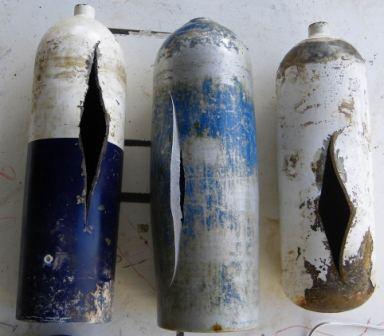My LDS refuses to fill any of these tanks period. It's a blanket policy.
I've been given many of these tanks over the years by people who got out of diving and have no idea that they are 6351 alloy and wouldn't even know what that means. They just think they are being nice by giving me free gear. I thank them and the first thing I do is drain them then drill a big hole in the neck and they go straight to recycle. I used to pass on them but now I beg to get them just so I can disable them and dispose of the properly. There are too many good tanks out there to mess with those turds.
Lead alloy? WTF!!
I'm no metalurgist, but why would they do that??
Please dont just drill a hole in the neck, take a chisel to the thread area as well, or better still crush or saw them as you dont realise how many stupid people there are who can and do thread out the drill hole and put bolts in them and then grind them flush. A pneumatic gun ready to kill. I know you send them to recycle, but someone might do a deal or look after his mate and give him a few tanks to "fix".
Destroy the tank to a point where it can never be used, usually a cold chisel on the neck seat area and thread internally does it permanently.
The OZ standard says cutting in half or crushing is acceptable. If the owner does not agree with doing that then FAILED stamped on the neck and a failed report must be done. In OZ most test staions usually get you to fill in a statement to say if it fails they can destroy. If you dont sign, they wont test.
Last edited:





